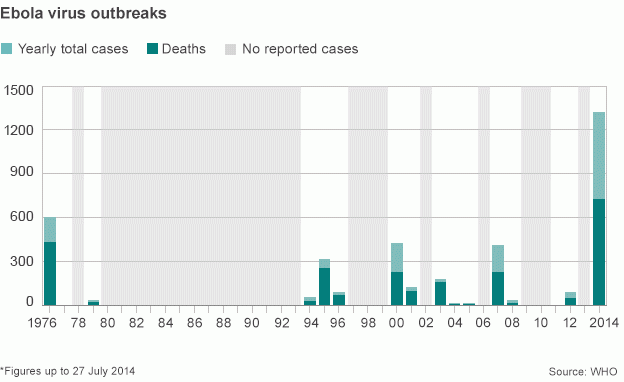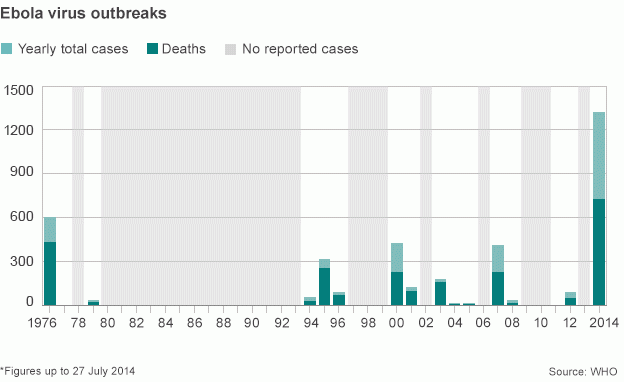Ebola Outbreaks And The Link To Fruit Bats: Charting The History Of The Virus Over 40 Years

With the tragic spread of disease in Africa, Ebola is on everyone’s mind. However, the history of this admittedly dangerous virus reveals a pattern of ebbs and flows. Now you see it, now you don’t. Ebola's first appearance in 1976 was dramatic as an outbreak occurred simultaneously in two places: Nzara, Sudan and in Yambuku, Democratic Republic of Congo. After these outbreaks were quelled, less than 50 cases of infection with the virus occurred three years later, but then the disease went into hiding for about 15 years. Since then, in an unpredictable manner, distinct strains of the virus have popped up in different areas of Africa every few years. As you can see in the graph, the 2014 outbreak is the largest in history.

What happens to cause this pattern of quiet and storm? Essentially, that’s the question no one can answer. It seems that once an outbreak has occurred, health workers educate many in the area of outbreak, teaching them to avoid contact with infected others and this contains the spread and prevents future outbreaks, to a certain extent. Yet, when the Ebola virus goes into hiding, it continues to lurk in what is known as a natural reservoir, in this case, the fruit bat. In fact, recent studies have shown three species of fruit bats carried the infection in their bodies without symptoms. Since fruit bats are commonly eaten by people in central Africa, where protein is scarce, scientists believe this may be the root cause of the illness. In fact, the virus causing Marburg — a form of hemorrhagic fever similar to Ebola — commonly hides within bats.



























